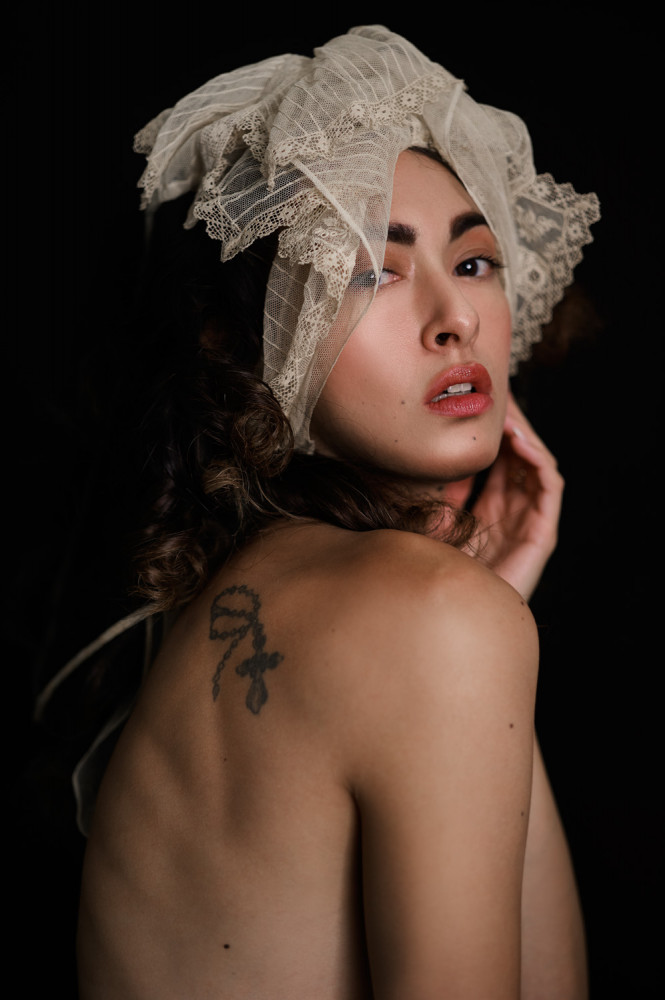
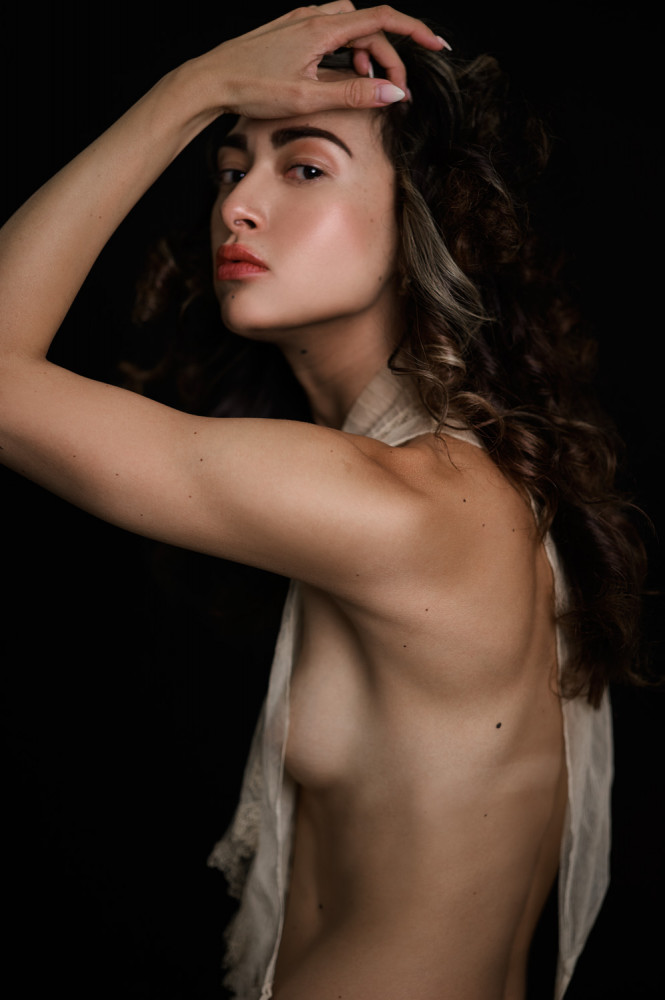
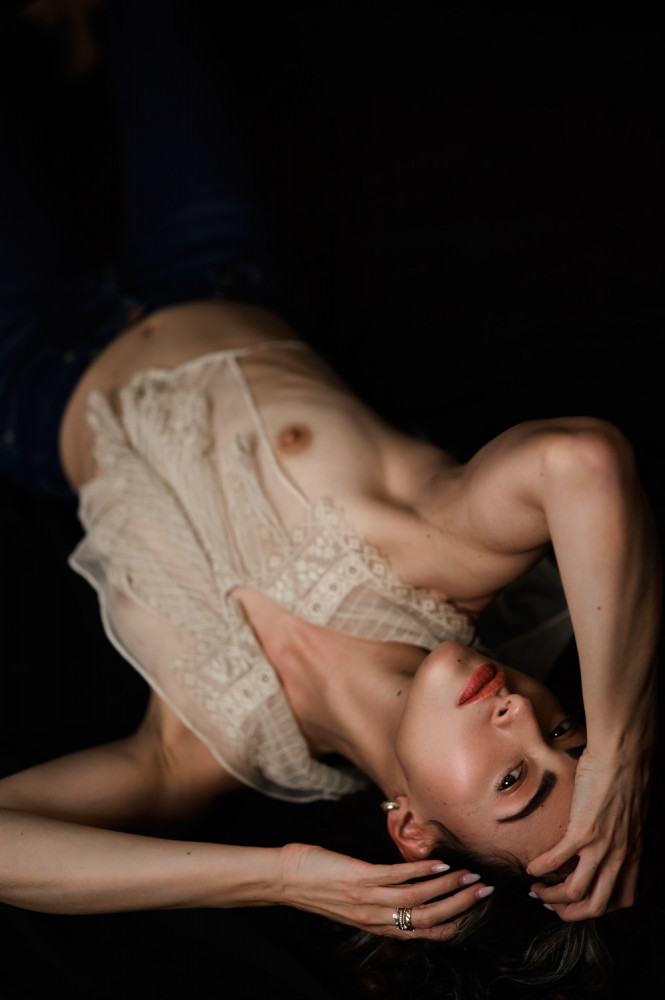
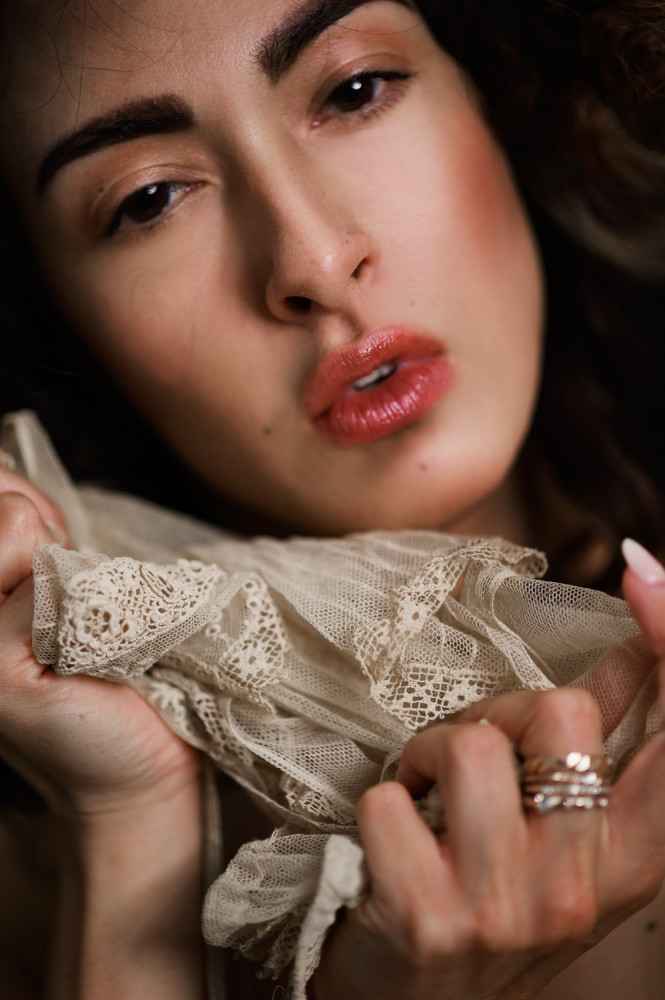
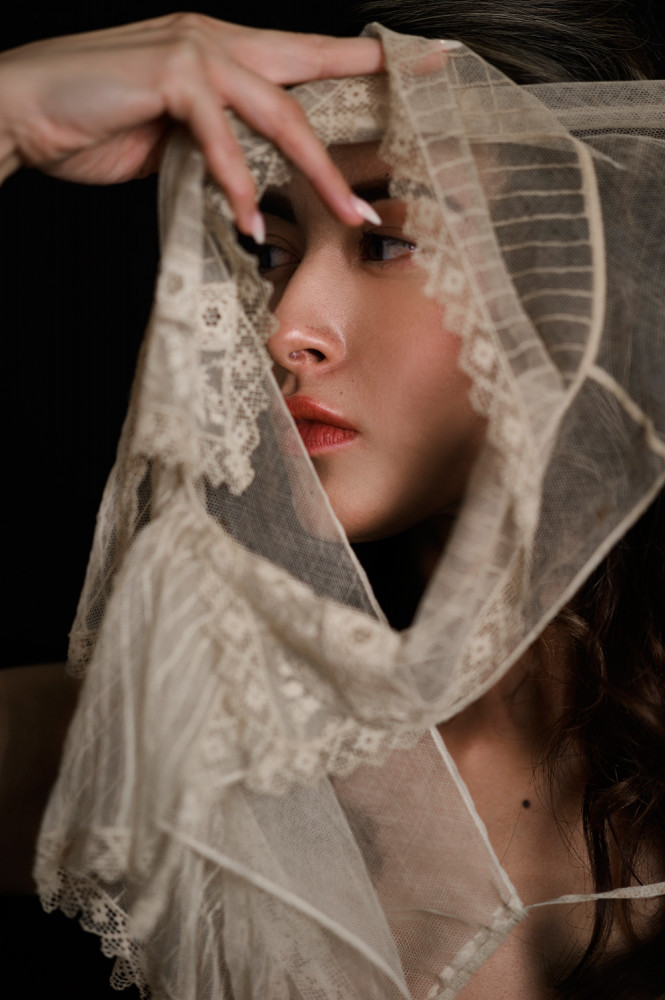
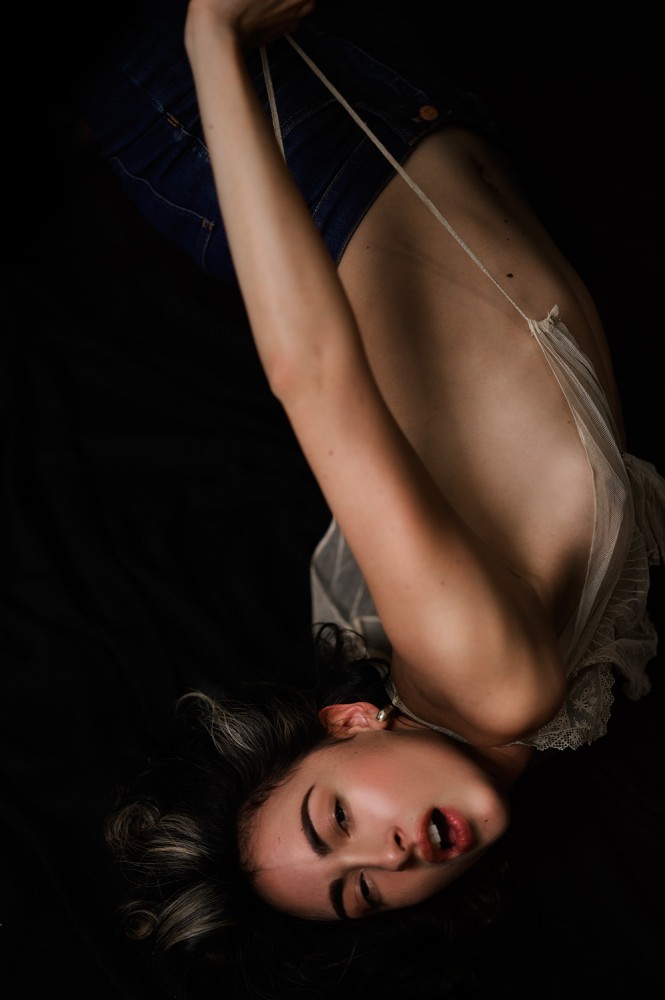
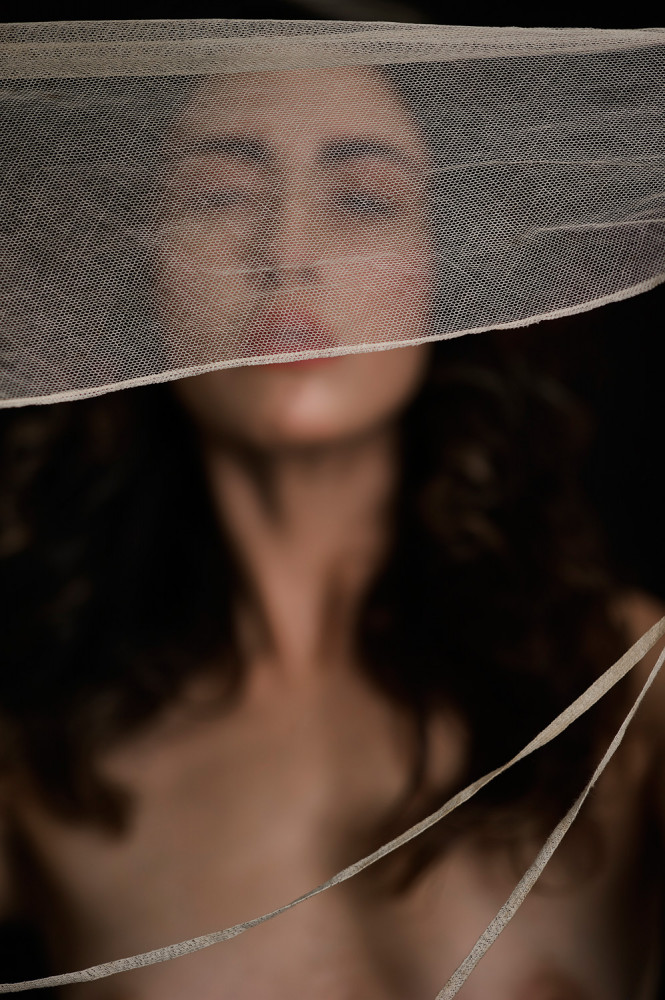







INTERVIEW
Erizée
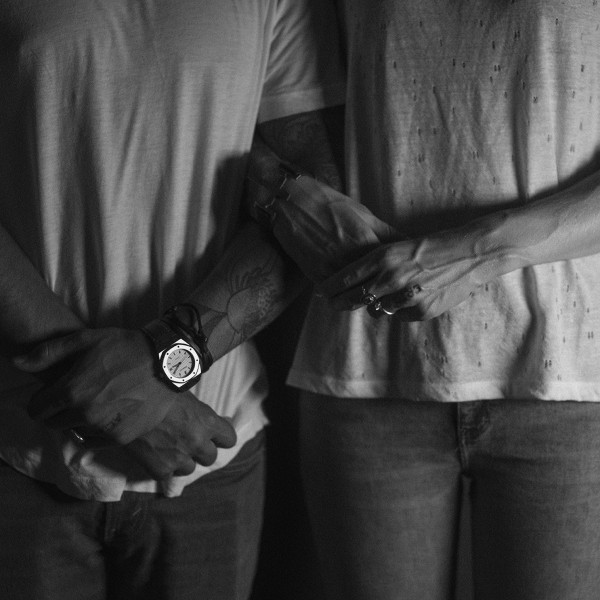
Photographer: Eric DosSantos Artistic Director: Alizée Lutz
Retoucher: Alizée Lutz Model: Genevieve Liberte
Camera: Leica S (Typ 006) with Summicron-S 100 f/2 ASPH.
Everything is beautiful: such is the sentiment of creative duo Erizée, aka Eric Dosantos and Alizée Lutz. The Los Angeles based artists feel that fashion photography should involve a sense of mystery, and invite the audience on a shared journey of discovery.
Your feature is called ‘Freedom in Beauty’. What can you tell us about the meaning of this title, and how do you convey the idea of freedom in your photographs?
Eric Dosantos: Freedom and beauty exist in each and every one of us. The difference is that freedom, to some extent, is a choice, while beauty is omnipresent – both within ourselves and in our surroundings. In this series Alizée Lutz, who is our creative director, decided to show beauty in the form of femininity because of the aesthetic appeal of the female body. Our model, Genevieve, was given complete freedom in front of the camera. By expressing her feminine energy and passion, she became the project’s visual embodiment of beauty.
What motivated you to pursue fashion and beauty photography?
I actually started out in fashion photography, but gradually shifted my attention to abstract as well as product-focused work. Collaborating with Alizée has prompted my return to the fashion & beauty genre.
What is your main source of inspiration?
The vision of Alizée Lutz, our creative director, whose background is rooted in beauty photography. As a dedicated feminist, she expresses herself by showcasing strong women and the power of femininity.
What is your view on the role and purpose of fashion photography?
Fashion photography shouldn’t just be a presentation of the latest trends and designs, but also an exploration of what fashion signifies to each of us. For Alizée, for example, fashion is an art form that can be used as a means of self expression. She is fascinated by how perceptions can be radically altered by a piece of fabric.
These images were created with a Leica S006. Why was your choice of camera so important?
I used a 006 for these images because I believe that it delivers the best colours in the world. I have worked with everything from Hasselblad to Leaf, Fujifilm GFX and Phase One/Alpa. The S system offers the most outstanding combination of speed, colours and sharpness. To me, it really is the ultimate medium format camera.
The great photographer Andreas Feininger once said that “talent is more important than technique.” Eric, as a trained engineer you are a representative of the technical field. What are your thoughts on this statement?
In my work, I consider technique to be very important – perhaps slightly less so in my fashion projects than in my product-focused assignments. Overall, I’m not sure talent and technique should be viewed as mutually exclusive. I believe that both are very important, and talent without technique would lead to arbitrary results without finesse.
What can you tell us about your workflow, particularly on this shoot?
In this case it was rather random. We were actually working on a shoot for a client when we realised the model had some vintage clothes with her. So we just decided to go ahead and start taking pictures. There was no preparation involved, we worked very intuitively. I opted for a shallow focus because I felt it would go well with the unique lace details on the model’s clothing. As for my workflow, 99% of the time I shoot the S tethered to a MacBook Pro, to ensure accurate lighting from the outset.
Many of your images seem to have an element of mystery: your models are frequently depicted wearing veils, or are completely covered; other times, the renditions are blurred, though always powerful. Do you consciously intend for your viewers to come up with their own interpretations?
As with any work of art, the viewer should always have the chance to develop his or her own interpretation – that’s the beauty of it, if you will. In this series, we decided to introduce a sense of mystery because there’s just no fun in stating the obvious. This way, we are taking the viewer on a shared journey of discovery. It was important that the model was able to let herself go in front of the camera, and become as one with the fabric. In some shots, the purpose of the lace is to conceal the model, other times it serves to emphasise her beauty. All of this was deliberately accentuated by using a shallow focus.
What criteria do models have to meet in order to be considered for one of your projects?
To be honest, this is something that varies from one shoot to another. Alizée has an excellent eye and great instincts when it comes to choosing models – ideally, she wants to feel something. And sometimes the model’s look simply fits the project.
What does the term ‘beautiful’ mean to you personally? Which aspects of your life would you describe in that way?
It is such an all-encompassing word. EVERYTHING can be beautiful – even things that are commonly classed as ugly. I think life itself is beautiful in all its facets – nature, colours, animals, our bodies, love… the way in which everything comes together. All you need to do is trust in life’s inherent beauty, and everything will work out.